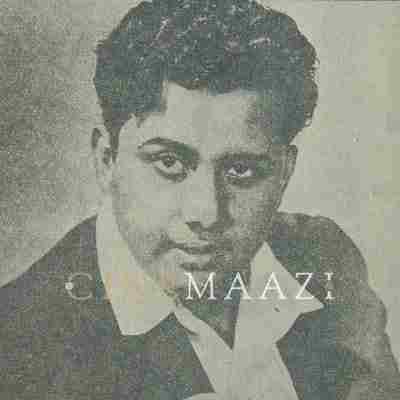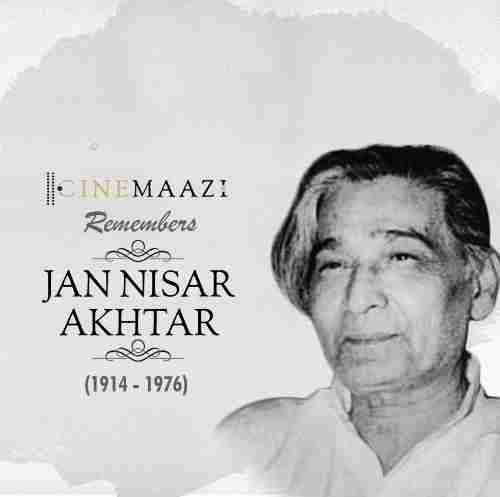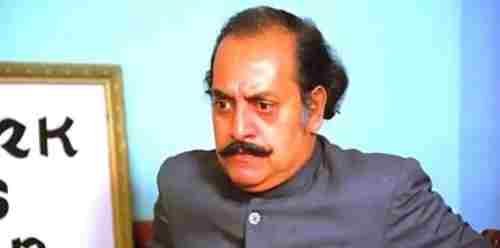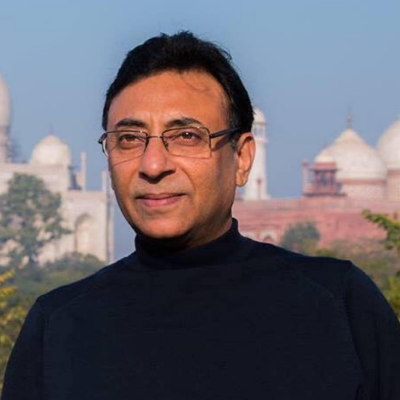Play 'Filmy' for Me: The Keskar Decade, AIR, and the Rise of Radio Ceylon
21 Jul, 2020 | Long Features by Sumant Batra
Subscribe to read full article
This section is for paid subscribers only. Our subscription is only $37/- for one full year.
You get unlimited access to all paid section and features on the website with this subscription.
Not ready for a full subscription?
You can access this article for $2, and have it saved to your account for one year.
Sumant Batra looks at how the folly of a government policy that banned film music on All-India Radio (AIR) led to the emergence of a game-changer, Radio Ceylon, and altered the soundscape of Indian radio…
All-India Radio, the national radio network—the information and entertainment lifeline of the nation—had for long played an important role in promoting film songs through radio. For many growing up in the 1930s and ’40s, radio was the main source of information and the only means of listening to film music, unless you were affluent enough to own a gramophone. Hotels and salons installed big radios to attract customers. Before independence, filmmakers, lyricists, singers and musicians composed songs that served as a vehicle to carry revolutionary, patriotic, social and political messages. Over time, film songs had become the finest medium for the spread of national integration and the national language.
Just as film music entered its ‘golden’ period in the 1950s, it came under severe attack from the state, being almost banished from AIR. One man was responsible for this decision.
However, just as film music entered its ‘golden’ period in the 1950s, it came under severe attack from the state, being almost banished from AIR. One man was responsible for this decision. In 1952, the Indian National Congress formed the government after a landslide victory in the first general election. Prime Minister Nehru appointed B.V. Keskar, a staunch Brahmin and a classical music purist, as his minister of information and broadcasting. During his tenure (1952-61), which came to be called the ‘Keskar decade’, Keskar spearheaded ambitious reforms to the national radio network. He believed that the country’s appreciation for classical music had fallen and was on the point of extinction, particularly in north India. He was convinced that the musical heritage of India had been adversely affected due to the influence of foreign rulers. Having studied Hindustani music, Keskar was keen on promoting it to restore its lost glory. ‘We must make (ourselves) familiar with our traditional music,’ he declared in an article in The Hindu (19 July 1953). He decided to promote classical music with a vengeance. It was chiefly through radio, he thought, that the country’s musical heritage could be rescued. The onus of making his countrymen ‘intimate with (classical music)’, therefore, was bestowed on AIR. He mandated that all songs aired on AIR be screened. Keskar wanted only songs that were infused with the sound of the flute, tanpura or sitar to be played on radio. Determined to accord classical music its rightful place in Indian society, he ordered that the public broadcaster should limit itself to classical and good folk music, broadly classified as Sugam Sangeet. Behind this conviction, lay, partly, his personal assessment of the quality of the broadcasts, which he listened to regularly, and partly, the impressions and experiences conveyed to him by some of the performing artistes, whom he knew intimately.
Keskar was convinced that the musical heritage of India had been adversely affected due to the influence of foreign rulers. Having studied Hindustani music, Keskar was keen on promoting it to restore its lost glory. ‘We must make (ourselves) familiar with our traditional music,’ he declared in an article in The Hindu (19 July 1953). He decided to promote classical music with a vengeance. According to him, film songs were far too westernized and would hinder the cultural growth of a young nation on the cusp of a bright future.
As a part of his crusade, Keskar declared that AIR would not air film songs and virtually banned them from AIR’s menu. Keskar held a blinkered attitude towards film and art music. According to him, film songs were far too westernized and would hinder the cultural growth of a young nation on the cusp of a bright future. He held film music as alien to Indian culture. He was of the view that film songs were straying from their responsibility of instilling national pride in people. He considered the lyrics, aside from being in Urdu, generally ‘erotic’, writes radio historian David Lelyveld in Upon the Subdominant: Administering Music on All-India Radio. Keskar identified the steady rise in the use of Western instruments and Western melodies in the songs with a lower stage of human evolution. Instead, he proposed, the country could lend its ears to highbrow classical music. AIR’s treasury of Hindi film songs was either discarded or buried deep under in the record rooms. In addition, Keskar ensured that if a film song was at all played, the film’s title would not be announced, since he considered that advertising. Only the singer’s name would be mentioned.
AIR had a monopoly on the airwaves at the time. As anticipated, film music disappeared from Indian radio within a mere three months.
AIR had a monopoly on the airwaves at the time. As anticipated, film music disappeared from Indian radio within a mere three months. One could pick up some Western music on short wave (with all its static) from Radio Australia, Voice of America and BBC, or the few Western classical (usually Russian) music tracks interspersed with Radio Moscow broadcasts. Listeners in north India had the luxury of a one-hour broadcast of the Western music request programme, A Date with You, presented by the redoubtable Preminda Premchand, on Friday evenings. But, Indian film music was completely silenced.Keskar and his supporters sought to orchestrate a soundscape for the Indian nation through the medium of radio. They assumed that citizen-listeners would be docile. Radio listeners proved otherwise. They protested against AIR’s music broadcasts by writing to magazine and newspaper editorials and by tuning their dials to foreign radio stations, whose broadcasts better suited their musical tastes. The film industry was up in arms. Filmfare magazine characterized Keskar as a devious man whose decision was ‘a calculated blow at the reputation of the Indian film industry, as much as one aimed at ousting film music from the market’ (August 1952 issue). In response, film producers who owned the rights to the songs decided to rescind the broadcast licences given to AIR. Through the circulation of interviews, editorials and articles in film journals, the film industry fought back against the ‘highbrow’ attitude of the state, foregrounding its role in giving music to the common man as a self-conscious cultural project.
Across the shore, Radio Ceylon, the first radio station in Asia, rose to the occasion and stepped in to fill the vacuum.
Across the shore, Radio Ceylon, the first radio station in Asia, rose to the occasion and stepped in to fill the vacuum. The radio station was launched in December 1925, just three years after BBC, under strict British laws. During the later years of the Second World War, the Allied South East Asia command under Lord Mountbatten set up an extremely powerful transmission capability in Ceylon to broadcast all over Asia as well as to the Allied troops stationed in the various sectors of the war. In 1948, Ceylon became independent. The British donated their short-wave transmitters to Sri Lanka, which deployed them for its newly formed all-Asia commercial broadcast services in English, Hindi and Tamil. Some of these were long-range 100kw transmitters, which could cover not only the entire Asian continent with great clarity and range, but were also able to reach south and east Africa! Radio Ceylon formally started operations in December 1949. Its operations were split between a national service (broadcasting predominantly on medium wave) and the commercial service (utilizing the powerful short-wave transmitters). It was the latter that was to become a rage.
The English and Tamil services took off with a bang soon after their inception. The range of programmes covered Western music from pop, classical, country to jazz and big-band swing, as well as a range of quiz shows. Extraordinarily for the time, it even aired live concerts, some from Colombo’s leading venues like the Galle Face Hotel.
The English and Tamil services took off with a bang soon after their inception. The range of programmes covered Western music from pop, classical, country to jazz and big-band swing, as well as a range of quiz shows. Extraordinarily for the time, it even aired live concerts, some from Colombo’s leading venues like the Galle Face Hotel. Global greats who performed live on Radio Ceylon included Jack Teagarden, the Golden Gate Quartet, Dave Brubeck, Duke Ellington and Eric Jupp. Many people across India were hooked onto Radio Ceylon. In the early 1950s, Radio Ceylon started its Hindi services. Radio Ceylon soon set the benchmark for radio programming and enjoyed immense popularity because of its long reach and clear sound. Sir Edmund Hillary, then the High Commissioner of New Zealand in New Delhi once stated that when Tenzing and he were on Mount Everest, the only station they could receive was Radio Ceylon.
Sir Edmund Hillary, then the High Commissioner of New Zealand in New Delhi once stated that when Tenzing and he were on Mount Everest, the only station they could receive was Radio Ceylon.
Daniel Molina, an American with business interests in India and Sri Lanka, saw a commercial opportunity in Radio Ceylon’s fast-spreading popularity. To tap into the burgeoning Indian listenership, its commercial service set up a company called Radio Advertising Services in Bombay in 1951 to get sponsorships and recruit broadcasters and announcers for its programmes and jingles. He also founded a production unit called Radio Enterprises Private Limited (REPL) to create radio programmes and commercials. To head REPL as Programme Director, Molina selected Hamid Sayani, a star broadcaster on AIR’s Bombay station. Hamid had also trained in advertising with leading firms like J. Walter Thompson and Stronachs. Radio Ceylon’s broadcasts soon began to be peppered with catchy commercials and jingles of almost all the major brands being sold in Indian markets. Hamid gathered a strong group of people to set up REPL’s Hindi section.
In 1953, the Swiss company Ciba decided to challenge the toothpaste duopoly of Colgate and Pepsodent in India by launching its brand, Binaca Top. To penetrate the vast Indian subcontinent market, it decided to promote its brand on Radio Ceylon by sponsoring a programme called Binaca Geetmala, a show dedicated to Hindi film songs, first broadcast in 1952 as Lipton Ke Sitaare. Ameen Sayani, the younger brother of Hamid, was selected to host the programme.
In 1953, the Swiss company Ciba decided to challenge the toothpaste duopoly of Colgate and Pepsodent in India by launching its brand, Binaca Top. To penetrate the vast Indian subcontinent market, it decided to promote its brand on Radio Ceylon by sponsoring a programme called Binaca Geetmala, a show dedicated to Hindi film songs. Ameen Sayani, the younger brother of Hamid, was selected to host the programme. Every Wednesday, Indian listeners would tune in to Radio Ceylon and listen to their favourite songs with the host opening the episode by calling out: ‘Ji haan beheno aur bhaiyo. Main aapka dost Ameen Sayani bol raha hoon aur aap sun rahe hai Binaca Geetmala.’ Sayani would then engage them with film trivia for the next half hour. Soon, Binaca Geetmala started ranking the songs based on popularity and feedback from people. Within a year, each weekly programme was getting more than 65,000 letters. Binaca Geetmala was promptly upgraded to a one-hour hit-parade programme. The Wednesday night slot (8–9 p.m.) became known as ‘Geetmala’ time.
Some of the other Hindi sponsored shows that stormed the airwaves through Radio Ceylon were: Ovaltine Phulwari, Colgate Rang Tarang, Lux Ke Sitaray (compered by Balraj, who later blossomed into the famous film star Sunil Dutt), Polson’s Chanchal Balak, S. Kumar Ka Filmi Muqaddama, Maratha Darbar Ki Mehekti Baaten, etc.
Over the years, the name of the show kept changing from—Binaca Geetmala to Cibaca Geetmala and later Colgate-Cibaca Geetmala—due to brand takeovers and change of sponsors. Some of the other Hindi sponsored shows that stormed the airwaves through Radio Ceylon were: Ovaltine Phulwari, Colgate Rang Tarang, Lux Ke Sitaray (compered by Balraj, who later blossomed into the famous film star Sunil Dutt), Polson’s Chanchal Balak, S. Kumar Ka Filmi Muqaddama, Maratha Darbar Ki Mehekti Baaten, etc. There were also some sponsored shows for various clients/products presented each week by famous film personalities such as Nargis, Meena Kumari, Manmohan Krishna, Talat Mehmood, Geeta Dutt, David, and others. And, of course, every major feature film that was released booked its own special series of shows. Millions of rupees in form of advertising revenue came from India. The station employed some of the most popular Indian announcers who played a vital role in establishing Radio Ceylon as ‘king of the airwaves’ in South Asia, among them, the Ganjwar sisters, Vimla and Kamini, Vijay Kishore Dubey, Gopal Sharma, Hasan Razvi, Kumar and Manohar Mahajan and Sunil Dutt. Radio Ceylon set the standard for popular radio broadcasting, and captured the imagination of an entire generation of Indians. Indians turned to Radio Ceylon to listen to their favourite film music. Radio Ceylon’s Hindi service, which was playing almost nothing but Hindi film songs, took over AIR’s popular entertainment audience! The number of listeners shot up to 2,000,000 from 900,000. Radio Ceylon prospered largely at the expense of AIR. Most early commercial broadcasters jokingly then referred to Keskar as the ‘Father of Radio Ceylon.’In India, the protests against the ban on Hindi film music on AIR became louder. On 7 April 1954, Parliament reeled under a scathing attack from Harindranath Chattopadhyay, a member of the Lok Sabha from Vijayawada constituency, himself a poet, an actor and a musician, who roundly criticized the exclusion of popular music from AIR, ‘without any effort made by government to understand what listeners wanted’. In the same session, Sardar Hukum Singh, a member of the Lok Sabha from Pepsu, emphasized that ‘AIR had failed to satisfy the people’ with its ‘light music’. The stupendous success of Radio Ceylon in capturing Indian audiences was produced as testimony. If people of India demand Hindi film songs, the demand should be met, he argued.
In the face of the unprecedented popularity of Radio Ceylon, Keskar reversed his public stand towards Hindi film music, and announced the launch of All India Variety Programme on 3 October 1957. A new India needed a Hindi title and the name ‘Vividh Bharati’ was arrived at.
In the face of the unprecedented popularity of Radio Ceylon, Keskar reversed his public stand towards Hindi film music, and announced the launch of All India Variety Programme on 3 October 1957. A new India needed a Hindi title and the name Vividh Bharati was arrived at. It combined two words, Vividhta, i.e., variety, and Bharatiyata, i.e., Indianism. AIR welcomed the return of film music and popular formats. The official press release actually made a specific mention of the fact that out of the five hours of programming each weekday, close to four hours would be dedicated to film songs. Vividh Bharati began its services from Bombay, and soon started broadcasting a variety of programmes for five hours on weekdays, simultaneously from Bombay and Madras.
During the 1962 war, Vividh Bharati broke new ground and started its iconic Jaimala programme for the Indian soldiers, who were fighting on the front.
During the 1962 war, Vividh Bharati broke new ground and started its iconic Jaimala programme for the Indian soldiers, who were fighting on the front. The programme was led by film personalities – almost unheard till then anywhere in the world. Nargis started it, followed by Lata Mangeshkar, Asha Bhosle, Mukesh, Manna Dey, Naushad, Sunil Dutt, Amitabh Bachchan, Meena Kumari, Balraj Sahni, Ashok Kumar and Dev Anand. But commercials were still not permitted. It was only on 2 November 1967 that commercials and advertising (the Commercial Broadcasting Service) were introduced. It began in the Bombay-Pune-Nagpur chain of radio stations, slowly spreading to others. Vividh Bharati’s first lot of externally recorded sponsored shows finally began to pour in from 3 May 1970. A huge array of excellent sponsored shows came to be aired, all building up tremendous listenership and revenue for AIR.
By the late 1960s, transistors replaced valves in radio sets, and this made receivers smaller and portable. There was an immediate expansion of radio services and listenership. Transistor radios became affordable and became an essential part of a middle-class family. Every tiny shop would have songs and other programmes blaring from every possible place. Entire generations were thus brought up on Vividh Bharati. Songs were free and songs were omnipresent. The Keskar episode highlights the irresistible appeal of Hindi film songs among Indians.
References:
http://www.historyforpeace.pw/news/the-strange-and-amusing-history-of-indian-commercial-radio-ameen-sayani/
https://thuppahi.wordpress.com/2017/11/09/when-radio-ceylon-swayed-india/
https://jawharsircar.com/assets/pdf/Vividh_Bharati%27s_Role_in_%27Unifying%27_the_Indian_Nation_Jawhar_Sircar.pdf
48 views








.jpg)


